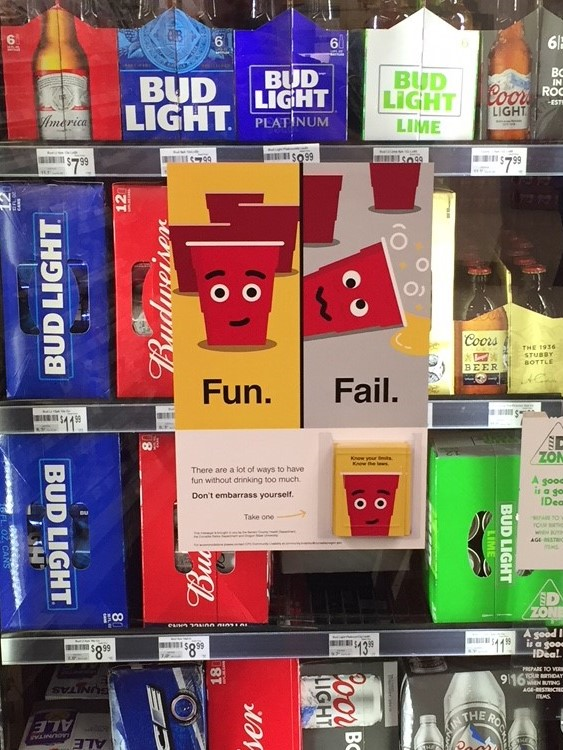Problem
Problematic Behavior or Activity
Corvallis, Oregon is the home of Oregon State University (OSU) and has a large population of undergraduate students residing in Corvallis during the school year. Residents complain about student conduct on a regular basis. Such concerns include disorderly conduct, vandalism, public urination, littering, noise complaints related to parties, amplified music, loud noises, and fights.
Impact on the Community
Unruly student behavior both detracts from the livability of the community and generates calls for service. Residents complain to the police department, the city of Corvallis, and OSU on a regular basis, resulting in the creation of several committees to address such issues
Solution
Program Description
The Community Livability Unit, within the Corvallis Police Department (CPD), conducted a problem scan and found a high percentage of livability calls for service and more serious crimes involved the abuse of alcohol. The unit also found that while many community partners conducted training and outreach on the effects of alcohol abuse, no effort was being made by CPD to educate the student population on the relationship between alcohol abuse, nuisance, and crime. The unit found an opportunity to couple enforcement with an educational campaign to reduce the undesirable activities stemming from students abusing alcohol. The unit also identified willing community partners. Overall, the response involved a coordinated and planned education campaign to raise awareness on the dangers of binge drinking.


Based On Research
The National Center on Addiction and Substance Abuse found that approximately half of college crime victims consumed alcohol before the crime occurred. The OSU Student Health Service found that alcohol was involved in 60% of college student suicides, 90% of campus rapes, 95% of violent crimes, and 50% of motor vehicle crashes. Based on such findings and considering stakeholder feedback regarding the campus culture supporting binge drinking and alcohol consumption, the unit chose to focus on problematic alcohol consumption with the student aged population— 18- to 25-year-olds.
Funding
Benton County Public Health (BCPH) provided 5K and Corvallis PD matched with a 5K contribution to the project. Oregon State University (OSU) assisted with the initial printing services as a partner. The cost to print 40 posters and 2000 wallet cards was around $600 in total. OSU provided printing services for two separate runs of 40 posters and 2000 wallet cards, totaling around $1,200. However, after the second print, they began charging CPD for all future printing services.
Outcome
Program Impact
The program was successful in both raising awareness of problematic drinking and for reducing alcohol related calls for service. A post campaign implementation survey showed that 73 % of those polled had seen the unit’s educational messaging; 35 % said that they were more likely to stay within their limits when drinking after seeing the ads; 47% said that the campaign raised awareness for “knowing your limits.” CPD’s internal statistics showed that alcohol violation cases and livability related calls for service dropped 26 % during the educational campaign.
Critical Success Factors
CPD credits community partnership for the success of the program and partnership helped keep the cost of the program manageable. CPD partnered with a local marketing firm—Madison Avenue Collective—to better reach the desired demographic of college-aged students and worked with OSU printing services to reduce the cost of the program.
Additionally, CPD partnered with every business in town where alcohol was sold and/or consumed. At the time of rollout, there were 41 establishments where the posters and pocket cards were placed. The partnership with OSU allowed us to put them on campus as well. So, students were getting the same message from everywhere. We also created magnets which were handed out at different events for students to place on the refrigerator.
Lessons Learned
Be creative with funding. CPD found that getting creative with funds was helpful in two ways. One, CPD found that monies dedicated to DUI enforcement could be redirected and used for this program. Two, they found it helpful that partners knew that CPD was providing matching funds. CPD provided 5k and asked partners to match that contribution. The idea of matching funds helped convince partners to contribute and that CPD had “skin in the game.”
Collaboration/ coordination. CPD found that keeping the number of partners to what is needed was key to success; they started by engaging many partners, but, as the project advanced, limited the number of partners to those directly related to the completion of the project. When more partners were included that were not directly related to the completion of the project, more time was needed with coordination and collaboration without improving the program’s outcomes.
Be persistent and realistic. CPD warns that agencies should not expect immediate results on projects. Often, projects take time, and a great deal of planning and coordination must take place before any action happens. Officers may get disillusioned with a lack of immediate results.
Trust the experts. CPD came to the project with some ideas regarding marketing. However, the marketing firm, the Madison Avenue Collective, suggested a different marketing approach. CPD deferred to the marketing advice from the Madison Avenue Collective and credits that move as contributing to the program’s success.
Additional Documents
Alcohol Awareness Magnet
Alcohol Awareness Poster
Alcohol Awareness Pocket Card
Alcohol Awareness Poster with Card Holder